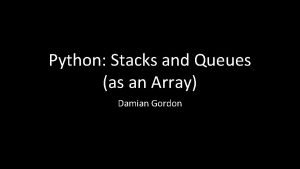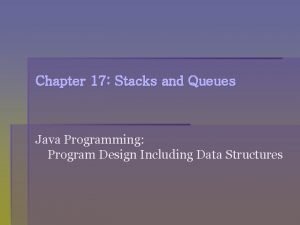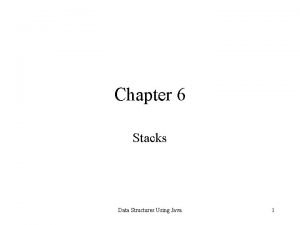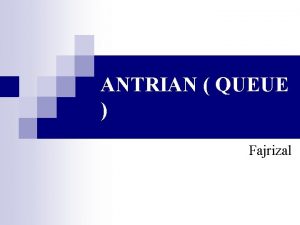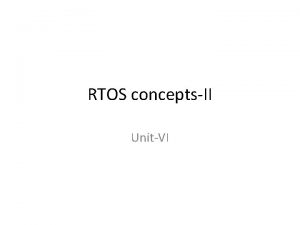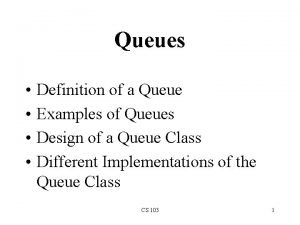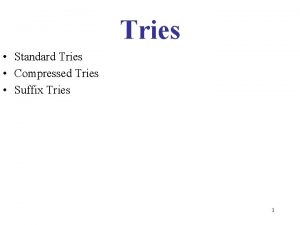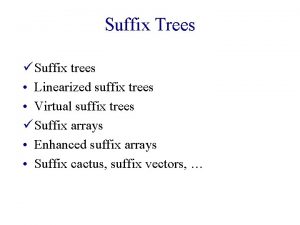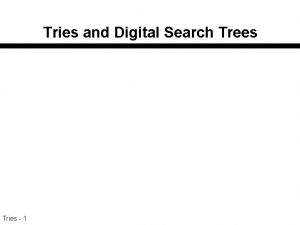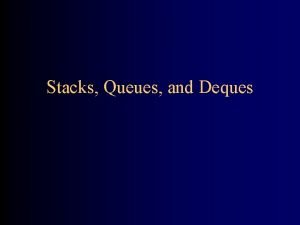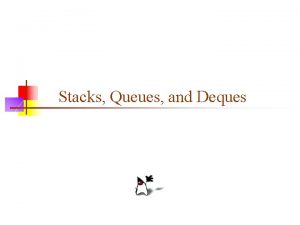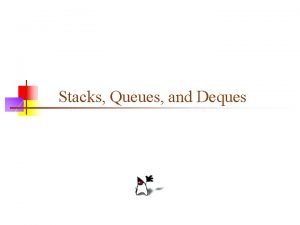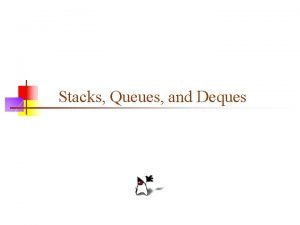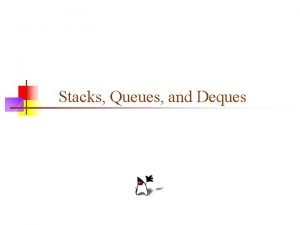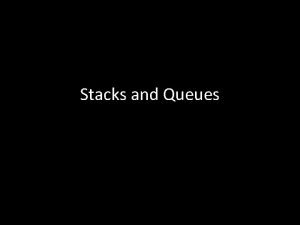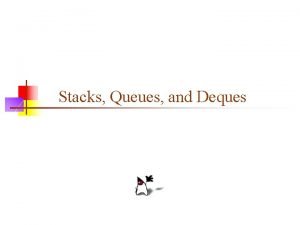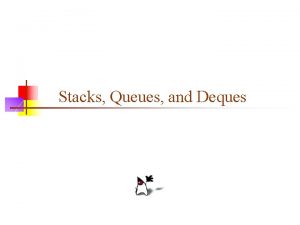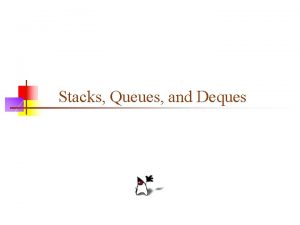DATA STRUCTURES Queues n Stacks Tries Suffix Trees
















- Slides: 16

DATA STRUCTURES • Queues ‘n Stacks • Tries, Suffix Trees • Heaps • Sieve of Eratosthenes

QUEUES ‘N STACKS DESCRIPTION and IMPLEMENTATION Queue Head A B C D E Tail B A Tail Stack Head E D C Operations: Add/Remove

QUEUES ‘N STACKS Uses: Many! Queues / Stacks • FIFO / FILO • BFS / DFS Search Tree Depth Queue = Shallow Stack = Deep

QUEUES ‘N STACKS Example IOI'96 Day 2 Problem 3: Magic Squares |1|2|3|4| |8|7|6|5| • • • 'A': Exchange the top and bottom row, 'B': Single right circular shifting of the rectangle, 'C': Single clockwise rotation of the middle four squares.

QUEUES ‘N STACKS Extra Implementation: Dynamic vs. Static

TRIES DESCRIPTION and IMPLEMENTATION Operations: Create T Search Walk E N L O To Tell T L Tent

SUFFIX TREES DESCRIPTION and IMPLEMENTATION Operations: Create Search C A A T T T Suffix Tree: Cat

TRIES N’ SUFFIX TREES • String Questions! Uses: • Find all occurrences of a substring in a string • Longest substring common to a set of strings • Longest Palindrome in a string • Sorting of a dictionary • Fast searching of a dictionary!

TRIES Example IOI'98 Day 1 Problem 1: Contact IOI'96 Day 2 Problem 2: Longest Prefix IOI'95 Extra Problems Problem 1: Word Chains A list of one or more words is called a chain when each word in that list, except the first, is obtained from the preceding word by appending one or more letters on the right. For instance, the list: i in integer is a chain of four words, but the list input integer is not a chain. Note that every list of one word is a chain.

HEAPS Description and Implementation An element at position X: 2 Parent: Truncate(X/2) 5 Children: (2*X) and (2*X+1) 6 9 8 A Heap 25968

HEAPS Heap Insert and Delete Insert: • Place the node at the bottom of the heap • If it’s smaller than it’s parent swap the two. • Rinse, repeat Delete: • Replace the node to be deleted with the node from the bottom of the heap. • If this node if greater than either of it children swap it with the smaller of them • Rinse, repeat

HEAPS Uses: To repeatedly Find the Minimum or Maximum of a set of Dynamic Values Dijkstra’s Algorithm! Krusal’s MST Algorithm!

HEAPS Example IOI'95 Day 1 Problem 2: Shopping Offers Given a set of items (up to 5) and their individual prices, and a set of special offers (up to 99) : 3 of item A plus 2 of item B for a certain price. Find the minimum cost to purchase a certain amount (up to 5) of each items. Shortest Path Problem Vertices: 6*6*6 = 7776 Edges: 99+5 = 104 Dijkstra’s Algorithm Standard: O(N²) ~ O(60000000) Dijkstra’s Algorithm Heap: 0((E+V) log N) ~ O(30000)

SIEVE OF ERATOSTHENES Use: Fast primality testing for a range of numbers: (*- Sieve of Eratosthenes *) For I : = 2 To MAX Do If (Prime[I]) Then Begin J : = I; While J*I <= N Do Begin Prime[I*J] : = False; J : = J + 1; End; (* Sieve of Eratosthenes -*)

SIEVE OF ERATOSTHENES Example IOI’ 94 Day 1 Problem 3: The Primes • • Given two integers A and B, output all 5 x 5 squares of single digits such that: Each row, each column and the two diagonals can be read as a five digit prime number. The rows are read from left to right. The columns are read from top to bottom. Both diagonals are read from left to right. The prime numbers must have a given digit sum “A”. The digit in the top left-hand corner of the square is “B”. A prime number may be used more than once in the same square. If there are several solutions, all must be presented. A five digit prime number cannot begin with zeros, ie 00003 is NOT a five digit prime number. Input: A = 11 B=1 11351 14033 30323 53201 13313

return 0; }
 Stacks and queues in python
Stacks and queues in python Java stacks and queues
Java stacks and queues Exercises on stacks and queues
Exercises on stacks and queues Java stacks and queues
Java stacks and queues Data structures using java
Data structures using java Struct queue in c
Struct queue in c 3 min quiz
3 min quiz Queue representation
Queue representation Message queues in unix
Message queues in unix Priority queue adt
Priority queue adt Rtos mailbox
Rtos mailbox Applications of priority queues
Applications of priority queues Examples of queue
Examples of queue Martinos email
Martinos email Suffix array example
Suffix array example Two stack pda
Two stack pda Terrace
Terrace
